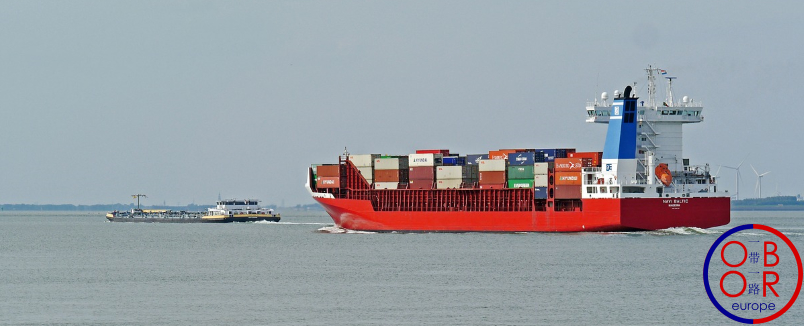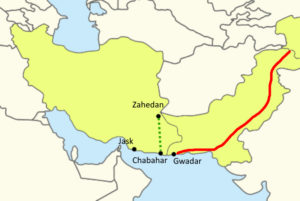by Dr. Sebastien Goulard

In early July, was announced a major deal to be signed between Iran and China. Full details have yet to be released to the media. But, this partnership is expected to have major consequences on the development of the Belt and Road Initiative in the Middle East and on the China-Pakistan Economic Corridor.
Strengthening Sino-Iranian relations
After President Xi Jinping’s state visit to Tehran in January 2016, negotiations regarding a possible agreement between the two countries were initiated. In 2019, Tehran officially joined the Belt and Road Initiative. The US withdrawal from the Iran nuclear deal in May 2018 also prompted Tehran to intensify its relations with China.
This does not mean, however, that China favors Iran over Sunni countries. Beijing remains one of the top clients of all Gulf states and adopts a balanced policy in the Middle East. We can even note a rapprochement between Saudi Arabia and China, in particular following Crown Prince Mohammed bin Salman’s visit to China in February 2019. As one of the main oil importers from both Saudia Arabaia and Iran, China is looking to reduce regional tensions.
The Sino-Iranian agreement and Chinese Investments in Iran
From 2014 to 2018, Chinese investment in Iran reached nearly $ 2.3 billion. With this new agreement, Chinese investment in Iran may skyrocket, as China may invest up to 400 billion dollars in Iran for the next 25 years. For Tehran, this would be a crucial partnership, as this would give Iran access to latest technologies and modernize the country. Iran is currently suffering from aging infrastructure because it does not have access to American and European technologies due to the US sanctions and European companies’ timidity. The Sino-Iranian deal is expected to include the construction of new subways and high-speed railways to better connect the different cities and regions of Iran.
Towards enhanced trade between China and Iran
China is now Iran’s top trade partner, and this new agreement is expected to confirm this trend. US sanctions give Chinese companies larger access to the Iranian market. For example, with the withdrawal of French Peugeot, Chinese car manufacturers will easily expand into Iran after the signing of the China-Iran agreement.
Likewise, in the aviation sector, one can imagine that Iran may soon purchase China’s future Comac C919 passenger jet. Although in 2018, the Chinese company disproved this possibility, current US-China tensions and the future Sino-Iranian deal could be a game-changer.
Jask port momentum
The Iranian government is currently trying to develop the port of Jask and plans to turn it into a major hub for its hydrocarbon sector. A pipeline connecting Jask to Iran’ western regions is to be built so that Iranian tankers do not have to pass through the highly strategic strait of Hormuz. According to the upcoming Sino-Iranian deal, Chinese companies would play a major role in the development of the port of Jask.
India and the Sino-Indian Agreement

India remains very attentive to the developtment of the Sino-Iran partnership. In 2016, New Delhi and Tehran reached an agreement regarding the port of Chabahar, located just 200 km of Jask, as well as the construction of a railway line from Chabahar to Zahedan, on the Afghan border. With these projects, India wants to advance the North South International Transport Corridor, that aims at strengthening economic exchanges between Russia, the Caucasus and Iran while bypassing Pakistan. This new axis lay also enable allow India to access resources from Central Asia. Exceptionally, the United States had agreed to lift economic sanctions against Iran on this Indian-led project in order to facilitate Afghanistan »s opening up.
However, due to some delays by Indian investors, Iran may choose to build this rail line without Indian assistance, as announced in mid-July. We can also assume that Chinese companies may be involved in this project. India nevertheless is still invited by Iran to invest in the port of Chabahar.
What relations with the CPEC?
The Sino-Iranian agreement will therefore boost the development of two major ports in Iran: Jask and Chabahar, while less than 200 km east of the latter, China is building one of the most major ports of the Indian Ocean at Gwadar in Pakistan.
One can therefore wonder about the future relations between regional powers, and in particular about the place of Iran vis-à-vis the China Pakistan Economic Corridor (CPEC). This corridor constitutes the more advanced segment of the Chinese New Silk Road project. With a $60 billion budget, the CPEC consists of multiple infrastructure projects such as the construction of roads, railways, special economic zones as well as the development of the port of Gwadar in the province of Balochistan. The CPEC has become a priority for the Pakistani government which is banking on this program to revive its economy.
For China, the CPEC will help to open up its western provinces, and in particular the region of Xinjiang, and also create a new, faster route to the Persian Gulf that will bypass the strait of Malacca.
During the historic visit of Pakistani Prime Minister Imran Khan to Tehran in April 2019, Iran and Pakistan pledged to work jointly on regional development projects. In December 2019, an Iranian official in Pakistan reaffirmed Iran’s commitment to join the CPEC, and in July 2020, the Iranian ambassador to Islamabad, Mr. Seyed Mohammad Ali reiterated Tehran’s interest in the BRI and the CPEC.
Iran and Pakistan are already cooperating at the local level. The two countries conduct joint counter-terrorism operations defense in the Balochistan and sell electricity to each other.
But for Iran to fully participate in the CPEC and for there to be coordination between the activities of the ports of Chabahar and Gwadar, several conditions must be met. The first one regards the lifting of sanctions against Iran. As Pakistani prime minister called for in March 2020, ending the sanctions against Iran would create more trade between Islamabad and Tehran. These exchanges would also be facilitated by the creation of new transport infrastructure between the ports of Chabahar and Gwadar. Since 2017, the Iranians have been considering this option.
The objective today is to coordinate activities between the ports of Chabahar and Gwadar to limit regional competition, and to make the Gwadar-Chabahar (-Jask) pole a major hub in the Indian Ocean thanks to the BRI project.
